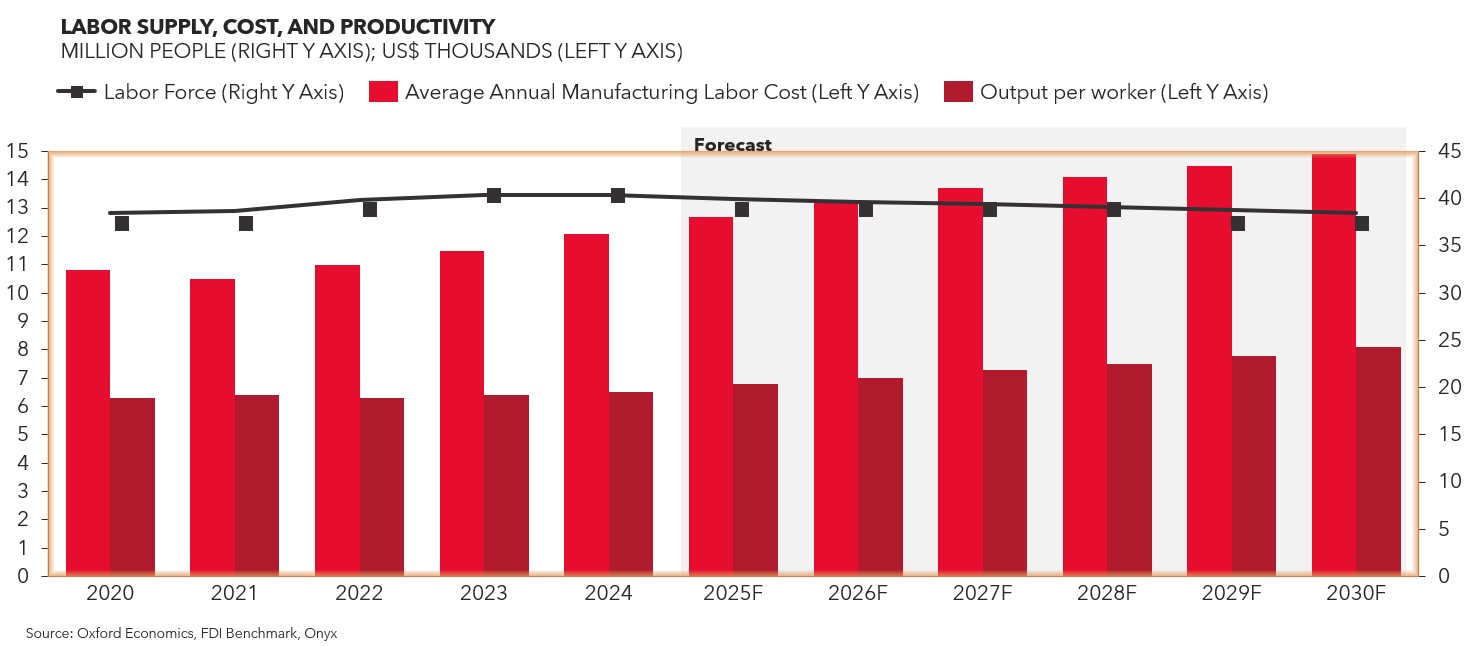
Search our articles
Thailand’s political landscape and competitiveness at risk amid Cambodia tensions

Key Insights:
- What is happening: The July 2025 Thailand–Cambodia conflict represents the most intense military confrontation between the two nations in over a decade. It has revealed deepening political fractures within Thailand, while also prompting a significant exodus of Cambodian migrant workers from the country.
- Why it matters: The conflict threatens to reignite political instability in Thailand, potentially hindering the rollout of business-supportive policies and weakening the country’s competitiveness. At the same time, the departure of Cambodian workers may further strain Thailand’s shrinking labor force—likely increasing labor costs, widening skills gaps, and deepening talent shortages, especially in the manufacturing sector.
- What happens next: Despite the ceasefire, tensions remain high, and the Thai military appears to be leveraging the crisis to gain political influence which is undermining the already weak Pheu Thai-led administration. Therefore, the country’s political instability is unlikely to be resolved in the short to medium term, putting the country at a disadvantage in competing with Vietnam and Malaysia for investment.
ANALYSIS
The conflict has had a notable impact on Thailand’s political landscape
The recent escalation between Thailand and Cambodia in July 2025 marks the most intense military confrontation between the two nations in over a decade. While the conflict has subsided following a ceasefire, its political and economic ramifications continue to ripple through Thailand. The confrontation has not only exposed growing political divisions within the country but also triggered a significant outflow of Cambodian migrant workers, with wide-reaching implications for Thailand’s labor market and economic stability.
Risks of political fractures and workforce decline challenge Thailand’s competitiveness
Domestically, the conflict has deepened existing political fractures. The Thai military, which played a central role in the conflict response, appears to be leveraging the crisis to reassert its influence, subtly undermining the civilian Pheu Thai-led government. This dynamic is adding fuel to Thailand’s long-standing political volatility, which could delay or derail the implementation of key policies that could support businesses, such as investment incentives and the development of Eastern Economic Corridor, among others.
At the same time, the mass departure of Cambodian migrant workers poses a direct threat to Thailand’s already strained labor market. These workers play a critical role in labor-intensive sectors such as agriculture, construction, and manufacturing. Their sudden absence exacerbates Thailand’s demographic challenges, particularly the shrinking working-age population. Businesses now face mounting labor shortages, which may drive up wages, increase operational costs, and widen skills mismatches—further eroding Thailand’s manufacturing competitiveness.

Looking ahead
Looking ahead, the political situation remains fragile. Although a ceasefire is in place, tensions with Cambodia remain unresolved. The Thai military appears to be leveraging the crisis to gain political influence amid a political vacuum in Bangkok, where the ruling coalition faces legal challenges involving figures like Paetongtarn Shinawatra and Thaksin Shinawatra. This is reflected in the military’s control over the ceasefire terms and its efforts to shape the narrative surrounding the conflict. Without a resolution to both the external dispute and internal power struggles, political stability in Thailand is unlikely in the near term.
This uncertainty places Thailand at a growing disadvantage in Southeast Asia’s increasingly competitive investment landscape. Restoring investor confidence will require not only a durable peace with Cambodia but also a renewed political consensus at home.
Topics: Southeast Asia, Industrial, Labor, Politics, Economy, Manufacturing

Written by Onyx Strategic Insights

